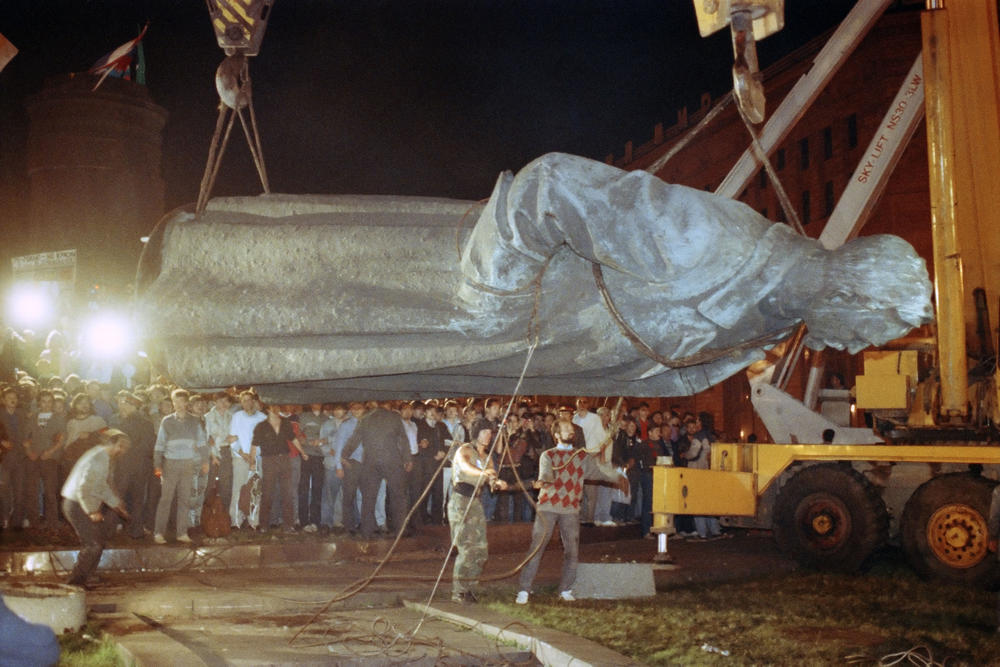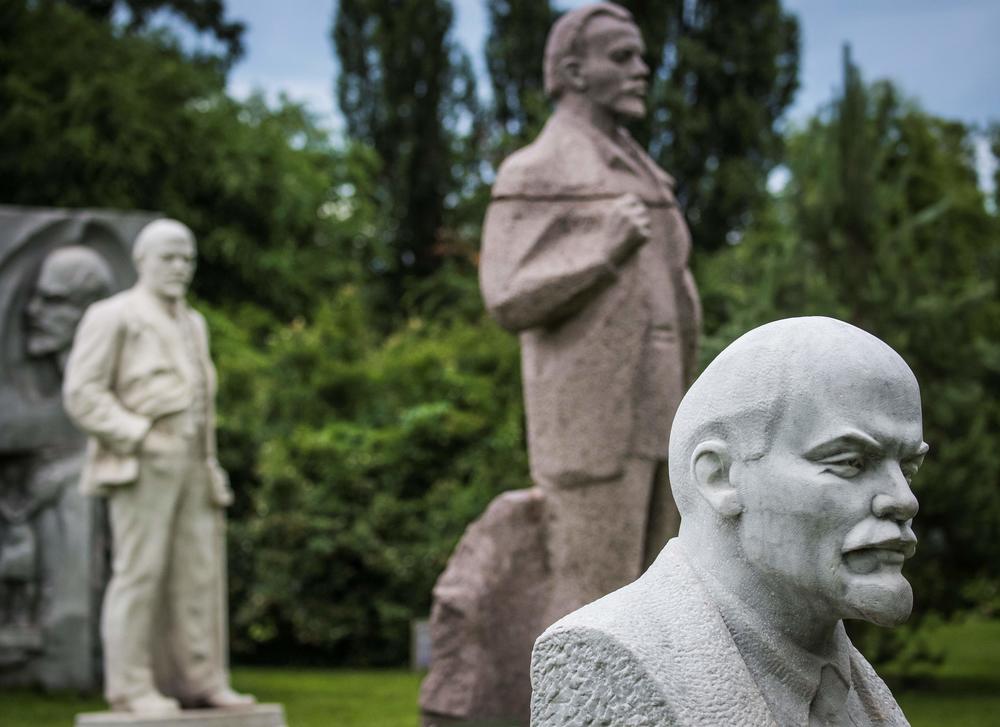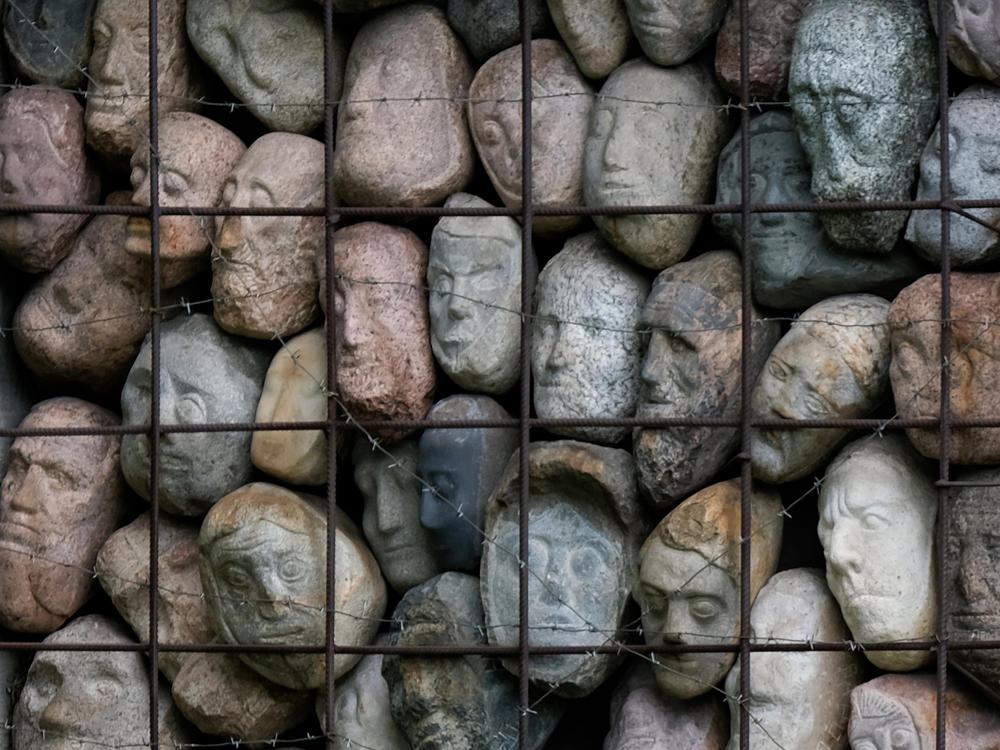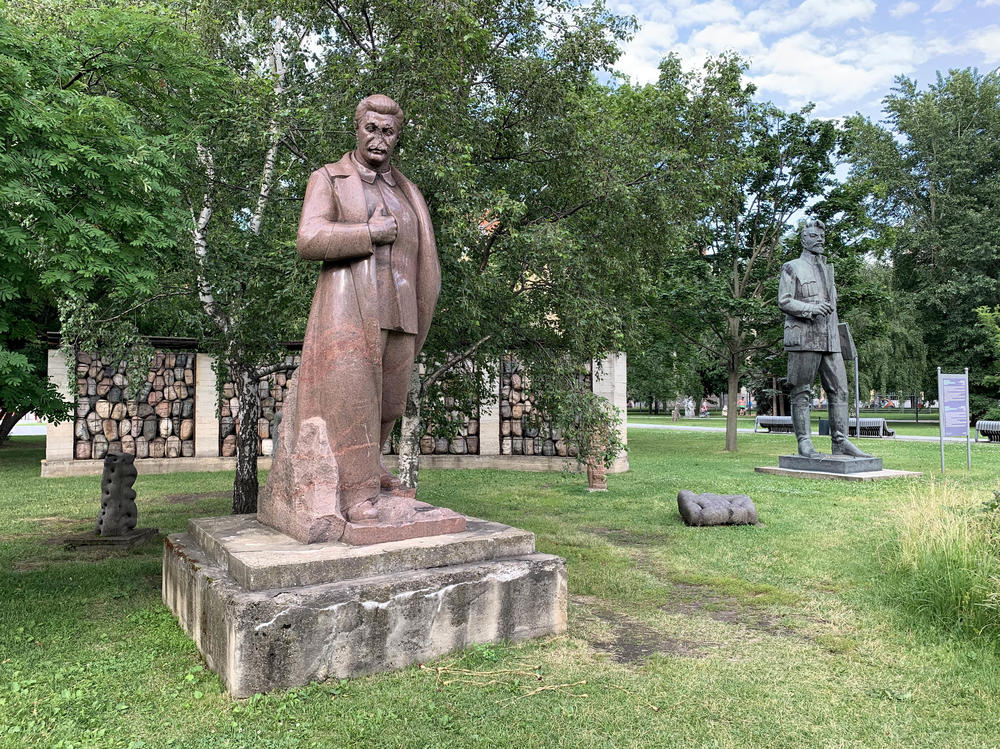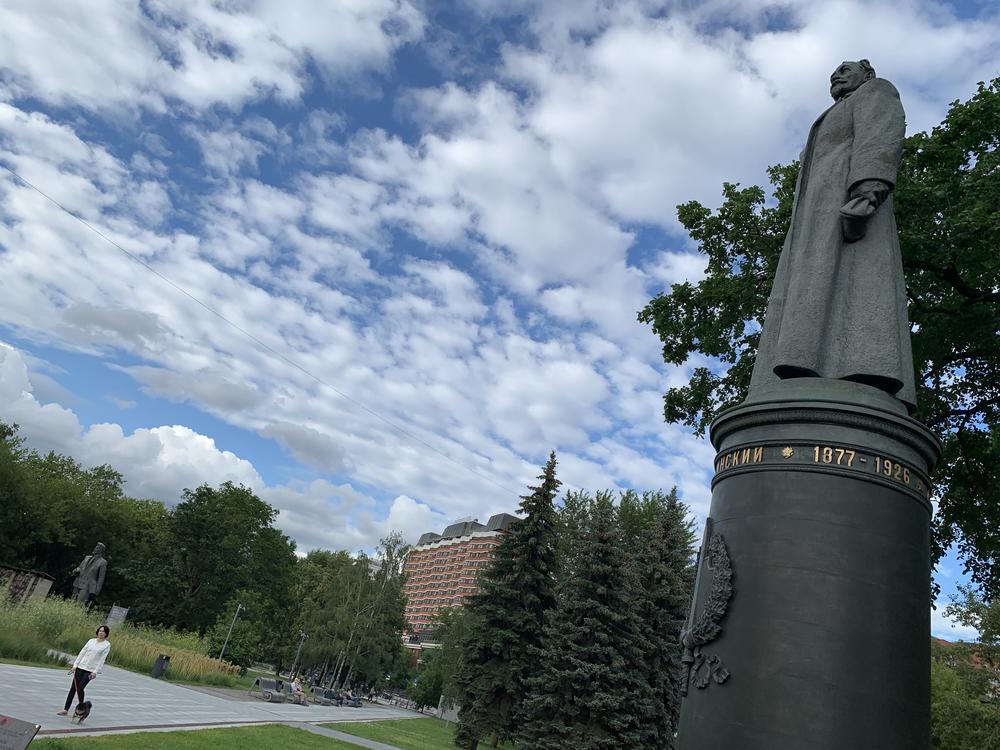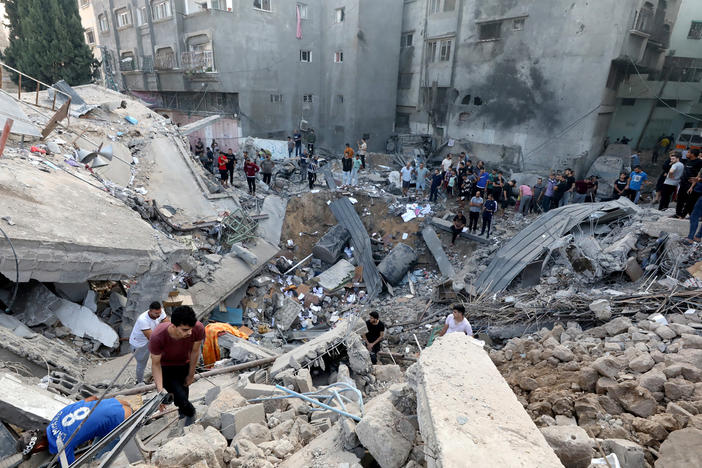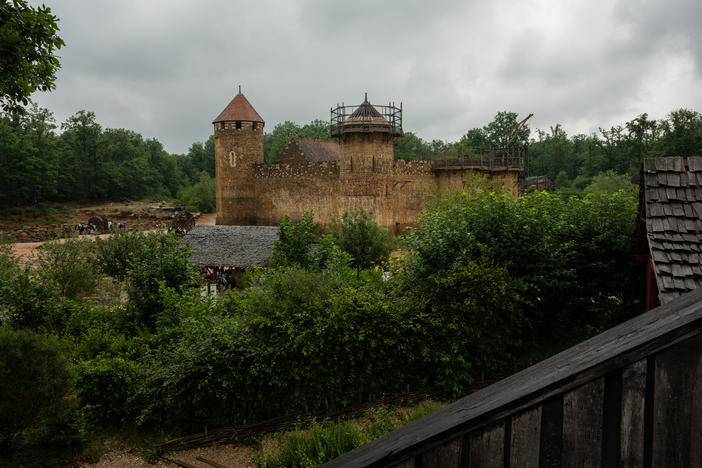Section Branding
Header Content
What To Do With Toppled Statues? Russia Has A Fallen Monument Park
Primary Content
For more than 30 years, a statue of Felix Dzerzhinsky, founder of the Soviet Union's feared secret police, stood guard in front of the KGB headquarters on Moscow's Lubyanka Square.
Then, in August 1991 after a failed coup against Soviet reformer Mikhail Gorbachev, pro-democracy protesters pulled down the 19-foot statue of Dzerzhinsky in his goatee and greatcoat. The colossus was unceremoniously dumped on a vacant lot near the Moskva River, soon to be followed by other fallen Soviet heroes. The following year, the city of Moscow designated the chaotic collection of statues as a sculpture park called Muzeon, also known as the Fallen Monument Park.
In Russia, regimes have come and gone over the past century, from the overthrow of the czarist autocracy in 1917 to the collapse of the communist dictatorship in 1991. But while the Soviets largely erased the czarist symbols, the fervor to tear down communist monuments in Russia died down once the Soviet Union fell apart.
"People were very quickly overwhelmed by hardships, by the collapse of the habitual safety net, by everyday problems," says Masha Lipman, a political analyst who has studied Russia's changing relationship to its monuments. "They lost interest in symbols very quickly."
The Soviet statues abandoned in the Muzeon park soon found the company of hundreds of contemporary sculptures, including characters from fairy tales, literary figures and abstract works. Muzeon is now part of Gorky Park, an urban oasis with a riverside embankment, cafes and shady lawns.
"It's one thing what statues mean when they are in conspicuous sites, in main squares and big streets," says Lipman. "It's quite another thing when statues like that are collected among many others in a park."
In Muzeon, the context of the Soviet monuments has changed entirely, she says, and the presence of so many other sculptures — mostly apolitical — has deprived them of their symbolic power.
Today Muscovites take yoga classes or rollerblade near the "Avenue of Leaders," which features statues of Soviet rulers such as Vladimir Lenin, Josef Stalin and Leonid Brezhnev.
"I consider these sculptures to be part of our history," says Artyom Golbin, a park guide and historian who was born in 1992, the same year Muzeon was founded. "The history of Russia — and any other country — has different periods, some of them bad, some of them good. Still, we have to remember them, and these sculptures are an important reminder of Soviet times."
Natasha Zamkovaya, strolling past Brezhnev with a friend, agrees that the monuments are needed to preserve the past. And the same applies to controversial statues in the United States, she says. "I'm against just sweeping away monuments. Those people had some sort of authority, their statues didn't just stand there for nothing," says Zamkovaya, 27. "They're also a part of American history."
In Muzeon, younger Russians are more drawn to contemporary sculptures, says park guide Golbin, while foreign visitors tend to take an interest in the Soviet monuments.
A pink granite Stalin, with his hand in his coat, lost his nose while being dismantled. Behind him stands a contemporary installation of 282 stone heads in a cage, symbolizing the Soviet dictator's countless victims. Sculptor Yevgeny Chubarov donated the work to Muzeon on the condition it be displayed next to Stalin.
The Stalin statue itself is a curiosity because it once stood in the Soviet pavilion at the 1939 World's Fair in New York, together with a pink granite Lenin, the founder of the Soviet Union. When the statues returned from the United States, Stalin's went to Moscow and Lenin's to Kyiv, the capital of Ukraine.
During street protests in 2013 against Ukraine's Kremlin-backed president, Viktor Yanukovych, the Lenin statue was toppled as a symbol of Russian domination. After Russia annexed Crimea and fomented an armed uprising in eastern Ukraine, Ukrainians proceeded to tear down the hundreds of remaining Lenin statues dotting their country.
By contrast, Lenin still stands in towns and villages across Russia — and not just in the Moscow sculpture park.
Muzeon visitor Dmitry Kuznetsov, who restores religious icons, says he doesn't find the presence of Soviet leaders offensive. "These people are long gone. Why blame someone who's already dead? That's not Christian," says Kuznetsov, 41. "They did what they did."
The peculiarly Russian aversion to pulling down statues has led President Vladimir Putin's spokesman to lament the current trend in the United States. A Russian art collector has even offered to buy the statues of President Theodore Roosevelt at New York's Museum of Natural History, and of a Russian colonial governor in Sitka, Alaska.
"The Russian experience should give some food for thought to those who are engaged in toppling statues in the U.S. these days," says analyst Lipman. "Fighting with symbols of the past does not necessarily help solve problems of the present."
Statues themselves cannot stop social change, she says, just as their removal does not guarantee it.
Dzerzhinsky, the founder of the Soviet secret police, may no longer stand on a central square, she says, but that hasn't stopped Russia's security services from remaining an omnipotent force.
"We see how the Russian government is becoming more repressive," says Lipman. "And the fact that Dzerzhinsky is not on Lubyanka, but in that park, does not change that."
In fact, the once toppled statue of Dzerzhinsky has been cleaned of obscene graffiti, restored and put back on his pedestal.
The statue is now protected by the government as a cultural monument.
Copyright 2020 NPR. To see more, visit https://www.npr.org.
Bottom Content

